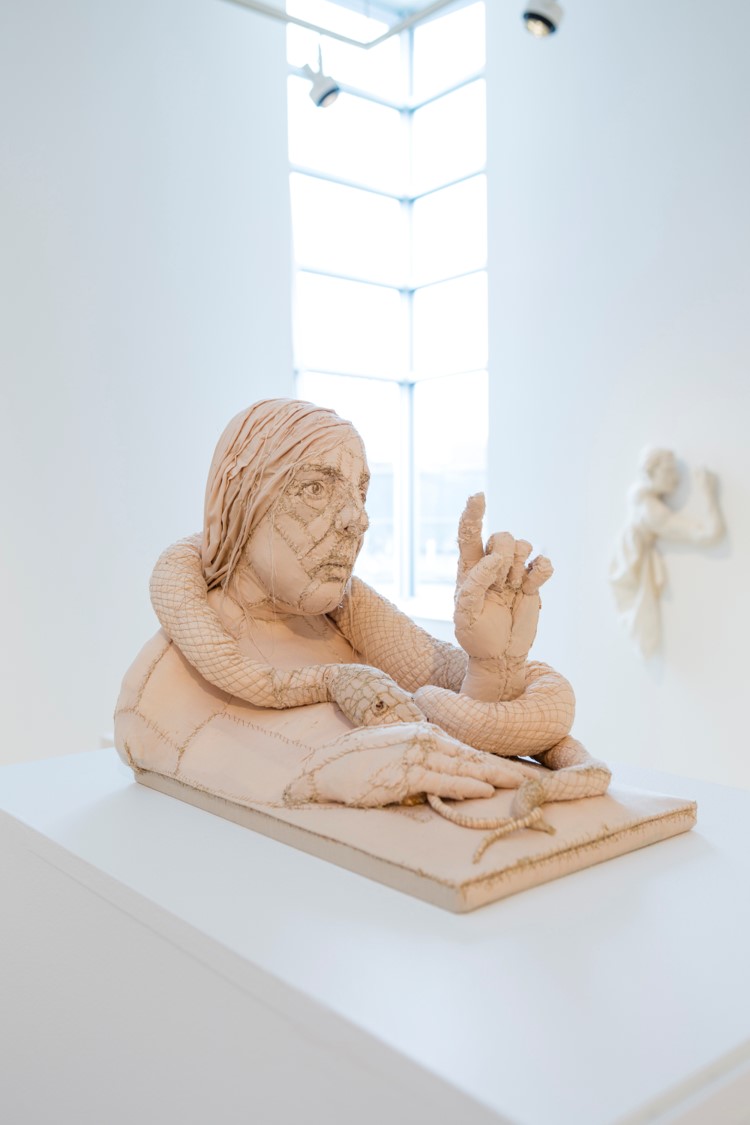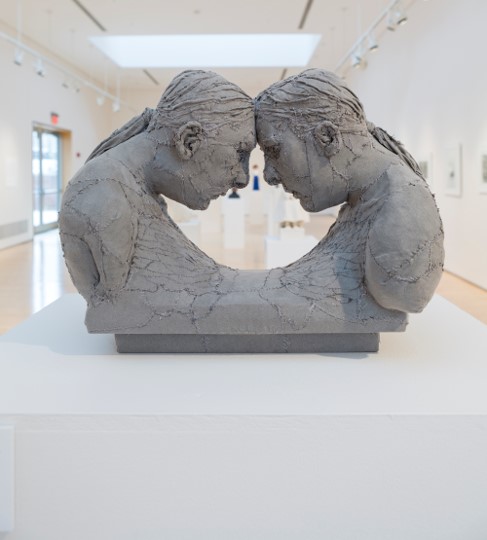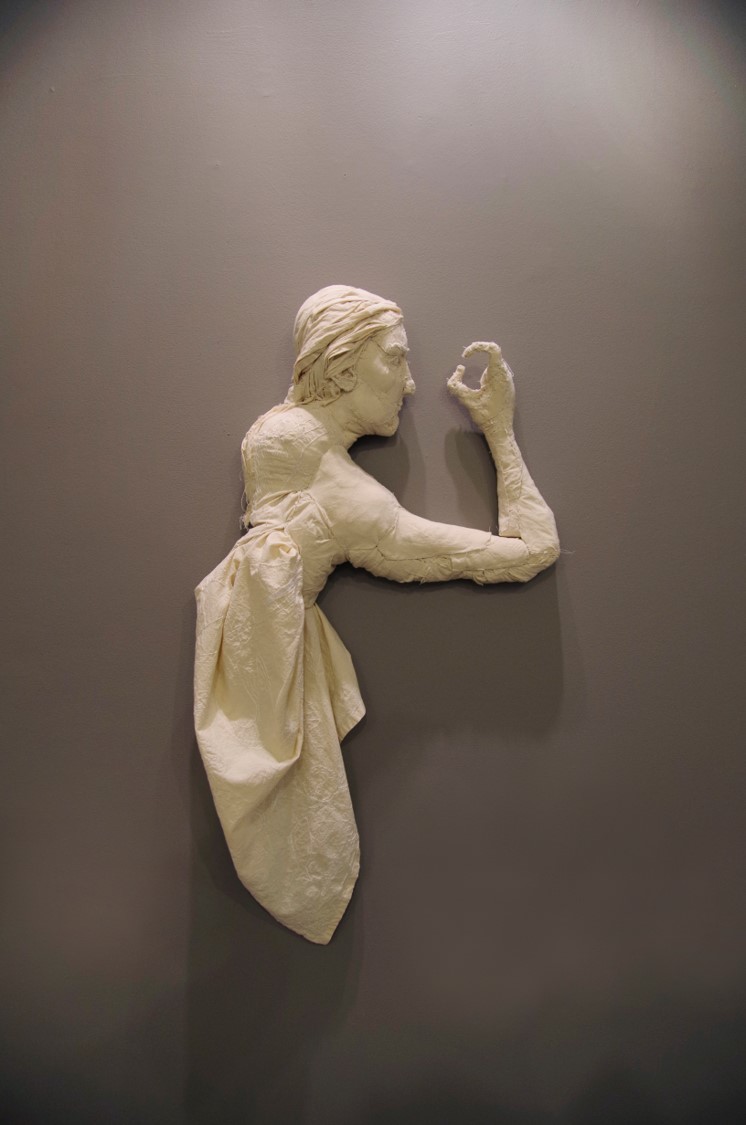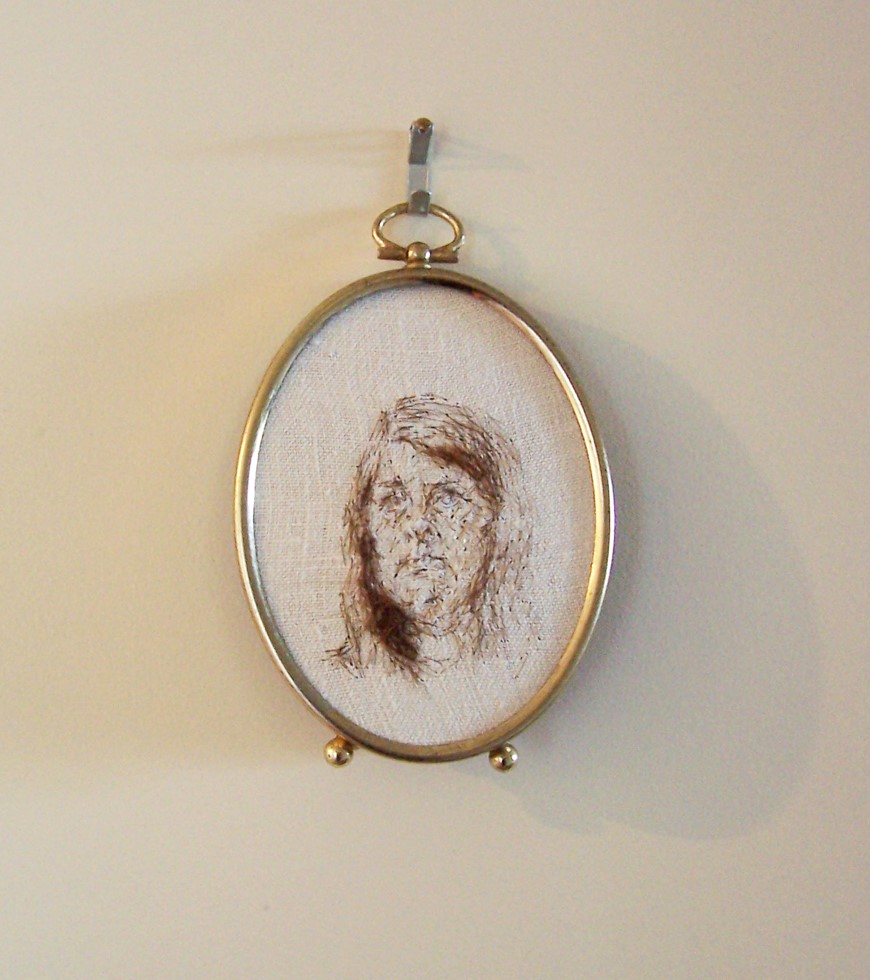Artist Statement
Much of my sculptural and drawn work is stitched. I find that cloth “acts” like the body. It bundles, stretches, gathers, and lays flat. Its outer layers reveal its inner forms. I am fascinated by both the textural variety of cloth to be found as well as the textural possibilities I am able to conjure out of it. Cloth is able to be both flat and structural. I am continually interested in making work that plays both as surface and form.




Artist Biography
Leslie Schomp’s work explores self-portraiture as subject. To look at oneself is a starting point in navigating the world around us. All her work stems from a desire to explore the experience of looking and drawing, even when the works become sculptural. She is interested in how her work can have two- and three-dimensional attributes and often line is a map of how she sees as well as a description of what she sees. Using a physical line such as hair, plant matter, wire, or thread is often how the line becomes both object and image.
Leslie explores the many facets of autobiography: herself as body, as a reflected image, as genetic information, as a muse, and as a boundary between her outer and inner worlds. Lately she has been looking at animals and their behavior to try to understand herself. Many of children’s first lessons and stories are about animals emulating humans. It is the reverse she finds she is now learning from. Instinct, empathy, hunger, desire, fear, and self-protection are all traits she looks for to understand in animals and thus herself. She is interested in how she is part of nature and not apart from it.
